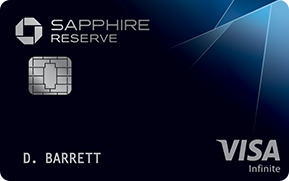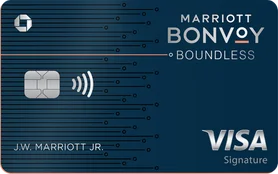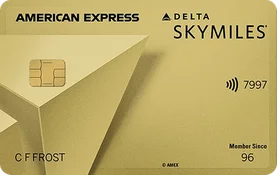Points and Miles Made Simple – A Beginner’s Guide
by Kayode

Points and Miles have opened the world of possibilities for many travelers, both new and seasoned. Many of us have benefited from this type of currency in travels by traveling the world for free, or at most, at a fraction of the cost. Personally, in the last 12 months, I’ve been able to take multiple trips valued at six figures while paying almost nothing for these adventures.
Being able to travel in premium cabins for small costs or none at all for new and experienced travelers is what travel hacking is all about. And one of the mistakes you can be making as a frequent or infrequent traveler is not earning points / miles for every dollar you spent.
If this sounds new to you, you clicked to the right link! Here, we open the world of possibilities for you by giving you a brief of how to start going about everything points and miles. We will explain the kinds of points that are available for travelers and how to earn them. Let’s get going as we’re about to open your eyes to the world of points and miles.
A couple of years ago, I did not know anything about points and miles. And even though I’ve been traveling for many years, I nearly exclusively used my debit cards for all my transactions on anything. You’re probably saying that sounds like me right now, yes, I know, we’ve all been down that road at some point. But over time, I’ve gratefully learnt a thing or more. There has never been the best time to begin to learn the ins-and-outs of points and miles than right now as people are hoping and getting ready to start traveling the world again after the Covid-19 pandemic which literally brought the world of travel to a complete stop. It is even easier because you can learn so much of this from the comfort of your own home.
And since your points and miles may be the opener to you getting back out there just as soon as it is safe to travel, and you are ready to start rolling after the travel restrictions are lifted by most countries. And even if your wallet or bank account isn’t well packed with cash as you’d like it to be, with the right and enough points in your account, you can be taking that dream trip sooner than you thought.

Toronto Sign (Toronto, Canada)
Niagara Falls, Canada
What are Points and Miles?
Typically, points and miles are a type of currency you earn each time you travel or buy something by paying through a rewards credit card. These points and miles can then be redeemed for free travel or cash back. The essence of this “hobby” is to create possibilities of traveling the world by using these currencies.
What are the available points and miles options for me?
I start by making it clear that there are multiple types of points and miles available in the travel and hospitality industry. Here’s an overview of the three types; airline miles, hotel points, and bank points.
Airlines Miles:
These are tied to one airline loyalty program. MileagePlan (Alaska Airlines), AAdvantage (American Airlines), Delta SkyMiles (Delta Airlines), MileagePlus (United Airlines), Etihad Guest (Etihad Airways), Skywards (Emirates Airlines), Avios (British Airways & other airlines), SilverKris (Singapore Airlines) are some examples for miles. You can use your accumulated miles to fly on the parent airline or its partners. What you need is to create an account by signing up as a frequent flyer with the airline. And by the way, let not the word frequent flyer scare you here, you don’t have to be a frequent flyer to sign up, and registration is always free.

Airbus A380 Double-Decker Super-Jumbo “Kings of The Sky” lined up 
Paris, Las Vegas
Hotel Points
Just like airline miles, hotel points are specific to one hotel or hotel chain. One common example is the Marriott Bonvoy, which introduced a new hotel credit card in 2018 after the acquisition of Starwood Preferred Guest. The Marriott Bonvoy loyalty program is the world’s largest hotel rewards program with 30 brands which ranges from limited service hotel brands to some of the best luxury hotels in the world.
You can use your points for hotel stays or transfer them to partner airlines in some cases. But, it’s often not worth transferring points except for some few cases when you just have to topup your miles account with a few thousands.
Like when you transfer 60,000 Marriott Bonvoy points to a transferable airline partner, you get additional 5,000 bonus miles. Transferring Marriott points to Alaska for example is at the ratio of 3:1, meaning that 3 points will give you 1 mile. Whether you’re more interested in using your hotel points for a longer stay at a Residence Inn, or you’d rather use those points for a few days stay at luxury hotels like The Ritz Carlton or at one of Hilton Honors world famous Waldorf Astoria, the choice is yours. What’s more important is being able to get a great value out of your points redemption. There are other hotels loyalty programs like World of Hyatt (which can be a good offer for family or a beginner), Wyndham Rewards, Choice Privileges, IHG Rewards Club and many more.

St. Regis Mauritius
Waldorf Astoria
Bank Points
Bank points comprises of programs such as Chase Ultimate Rewards, American Express Membership Rewards, Citi ThankYou, just to name a few. You can use bank points for anything, including gift cards, cash backs, and to pay for your travel. By transferring these points to the airline of your choice, you could be flying in one of the world’s best business or first-class products. Personally, I prefer credit card / bank points since they are more flexible, and the points let you keep your alternatives open. They are very versatile, hence, preferred by many. Now you know, right?
Are you ready to start earning miles and points? Here’s how to get started
Whether you’re new to this and just planning to try it out, or you already have one or two credit cards that earns you cashback, having the right rewards cards that earns you the right points and miles is the ultimate goal. Imagine earning these points and miles without even stepping on a plane! Yes, you can, and this is how.
Acquire and Use a Credit Card:
While acquiring a credit card sounds as easy as just signing up for a card and you’re done within a few minutes, there’s more to it than just signing up for any card. For example, if you want to fly Emirates Business Class, you will be making a great mistake by opening a Frontier Credit Card. Knowing the cards that will meet your travel goals is one of the first steps to take.
Acquiring a credit card is one of the easiest and efficient alternatives to earning airline miles or hotel points. Most credit card issuers today offer one incentive or the other for customers to use their products like first-time sign-up bonuses. They can reward with a number of miles for spending a specified amount of money or points within a period of three months.
While many premium cards that offers huge sign up bonuses comes with hefty annual fee, there are a couple of beginner’s credit cards out there with no to reasonable annual fees. Cards like the Chase Sapphire Preferred is currently offering 80,000 bonus points, while the Marriott Bonvoy Boundless Card from Chase is currently offering 100,000 bonus points (or 3 Free Night Awards). Both of these cards have a $95 annual fee which we highly recommended.
With the Marriott Bonvoy Boundless Card, you’ll earn 6x points per dollar on bookings made directly with Marriott, 2x per dollar for other purchases.
There are many other premium cards like The Platinum Card from American Express with better travel benefits, but these cards come with an average of $550 annual fees.
There are also both airlines and hotels co-branded cards that either earns you points, or miles based on your preferences and the type of cards. Cards like Alaska Airlines Visa Credit Card, AAdvantage Credit Card, United Explorer Card, and many more.
 Amex Platinum Cardmembers have access to Centurion Lounges and over 1,300 Airport Lounges Worldwide
Amex Platinum Cardmembers have access to Centurion Lounges and over 1,300 Airport Lounges Worldwide
While the signup bonus can be enticing and exciting, you need to keep in mind that to earn this bonus, you have to meet the spend requirement of the card. Usually, this requirement is to be fulfilled within 90-days of account opening. Have a proper plan in place about how you’ll be able to achieve this spend requirement before applying for the card will definitely make your life easier. Say if you or a family member have a big purchase coming up, then it might be a great time to apply for the card.
It will help if you continue spending on the card after receiving the sign-up bonus to earn miles on your subsequent purchases. Plus, it enables you to maintain a steady flow of points or miles rewards monthly to your award accounts. Of note, ensure you pay off the cards on time to avoid late fees and interest charges. Paying interest on a reward card will definitely devalue the bonus points earned on that card.
Look out for a card that can works best for you and sign up when you are ready to spend an amount on a purchase that can cover the minimum amount to earn you the bonus. And again, remember that major airlines and hotel chains have their own co-branded cards. Besides, several banks provide their own cards awarding the points.
More Ways To Earn Points and Miles
Some of the many other ways of earning points and miles are shopping and dining portals. Why earn from one platform when you can double dip? Shopping and dining portals, though are often overlooked by many, are another great way of stacking up points and miles. Imagine earning something in return for every of your everyday spending. These portals direct you to the retailer’s website of your choice where you can then do your online shopping normally.
Rakuten, Alaska MileagePlan Shopping Portal, American Airlines AAdvantage Shopping Portal, Simply Miles, Delta SkyMiles Shopping, JetBlue TruBlue Shopping, United MileagePlus Shopping, Southwest Rapid Rewards Shopping are some of the popular shopping portals.
Sites like CashbackMonitor provides a list of all online portals that offer cashback, miles, points for hotels, or credit card. It is always advisable to check the portal to know if you’ll be earning points, miles, or cashback, as each portal offers something different.
Related: Amex $300 or 30,000 points Retention Offer
Another less known option is Dining Portals. Similar to the aforementioned shopping portal, dining portal is another way to get up to a certain percentage back on your purchase. Some portals offers cashback, some points, while some offers miles. Some of the dining portals out there are Eat Around Town, Mileage Plan Dining. These two are a member of Rewards Network. Seated is another great portal, although with limited restaurants and is not available at all states.
Bottomline
Miles and points “hobby” doesn’t have to seem daunting as it often does for many people. The most efficient and effective way to start is acquiring a reward credit card that seems to work for you and learn how you can maximize it to earn as many points as possible.
Finally, know how to redeem the rewards for best redemption options matters a lot, as this is one of the determining factors of what values you get out of your hard-earned points. The best deal may differ from one person to another, as no ideal redemption can seem best for everyone. But at the end of the day, it’s a win win for everyone whether you use your points to fly in coach and stay at Hampton Inn, or you use your points to fly business class and sipping on champagne at 38,000 feet up in the air.
Did you learn a thing or two from this article? Well, you can start now to put yourself on this path of traveling the globe by nearly paying nothing.

Nigeria-born, California-based.
Kayode currently holds higher status on multiple airlines and hotel programs. He has visited 4 continents, 30 countries, and 35 of the 50 US states.
He began his adventure journey after selling his first cellphone ever, and used the money to apply for his first passport. He said to himself, “I’d rather have a passport than a cellphone”. And since then, he has been globetrotting.





4 Responses
[…] Read more: A Beginner’s Guide To Points & Miles […]
[…] Read more: A Complete Guide To Points & Miles […]
[…] Related: A Beginner’s Guide to Points and Miles […]
[…] A Beginner’s Guide to Points and Miles […]